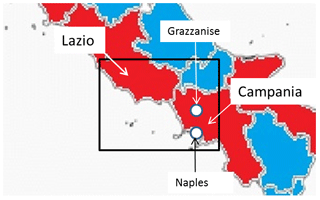High-resolution simulations with COSMO model including TERRA_URB TERRA_URB parameterization for the representation of Urban Heat Islands over South Italy
In this work, some preliminary numerical simulations with the COSMO model including TERRA_URB parameterization have been performed. In particular, this work concerns simulations over a small domain located in southern Italy, in order to test the capabilities of the model in reproducing the main climate features of Urban Heat Islands over this area. Model evaluation has been performed in terms of 2 m temperature in an urban area and in a rural one, in order to highlight the behaviour of the parameterization in different contexts. Numerical results encourage further investigation and development of urban parameterization in very high-resolution configuration of limited area models and specifically of COSMO, to improve the representation of the maximum daily values of temperature and diurnal cycle especially in urban, but also in rural areas. Furthermore a better parameter tuning is still required for this specific test case.








